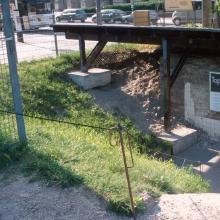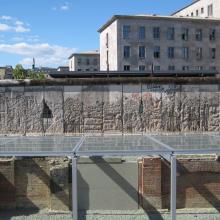Topography of Terror
The Topography of Terror is an exhibition and documentation center on the site of the former Gestapo headquarters in central Berlin. The site had been uncovered in the 1980s by grassroots movements, lifting it back onto public consciousness after decades of collective oblivion. It was originally set up as a temporary exhibition, and although the exhibition was reconfigured and made more permanent over the years, it maintained an open-ended, unfinished quality that earned it the nickname of “open wound.” Remnants of Gestapo prison cells were exposed in a rough linear dugout, along with informative plaques and images, all protected by a makeshift wooden cover. The site looked like an excavation of ruins in progress, and visitors could have the feeling of being almost literally in the trenches of history.
In 2005 architect Ursula Wilms and landscape designer Heinz W. Hallmann won a competition to reshape the site into a more permanent form, and to accommodate the increasing numbers of visitors and the growing needs of the documentation center. The new design transformed the open wound into an uncanny landscape of concrete and gravel, sealing the ground with a sterile cover and exposing the ruins under the harsh light of glass plates and metal. Although the rough and open-ended character of the site was transformed, the new configuration is possibly more unsettling in its relentless, unforgiving exposure of history and its remains.

